List definitions
Key Points to List Definitions
- Allows you to create drop-down lists to be used in workflow fields and asset attributes.
- A single list can be used multiple times, enabling standard responses.
Create A list
Quick Steps to Create a List

- Select the List Definitions tile from the Landing Page.
- Select Create on the List Definitions Search screen.
- Enter the name of the List.
- Select Save.
Security Rights Required: View List Definitions; Create/Edit List Definitions; Copy List Definitions
Add items to a List
Quick Steps to Add Items to a List
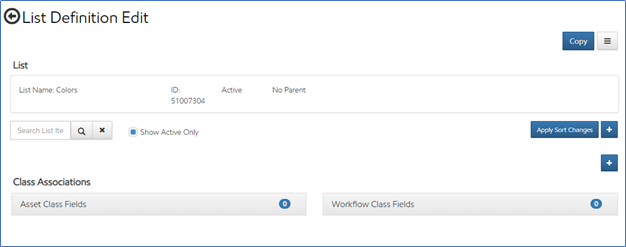
- Select the Add button.
- Enter the Name of the list item.
- Identify if an Alternate Name is allowed.
- Enter a Key.
- Identify the sort order.
- Select the Save button.
Detailed Steps to Create a List Definition
When you select Create in the List Definitions Search screen, the Create List Definition wizard appears.
- List Name (required): enter the name of the list
- Has Parent: Identify if the list is relative to another list. For example: a list of Colors is based on the type of hydrant selected in a previous question.
Adding List Items
For each item to be included in the list, select the Add button.

- Item Name: Required Field
- Allow Alternate Name: Allow a user to manually enter or to further clarify a value in the list. Allow Alternate Name is typically used in cases where Other is an item in the list. When this checkbox is set, when the value is selected from the list during use, the user is provided a text field to enter additional information.
- Key: Uniquely identify a specific line item that can be used in calculations or visibility conditions for other fields.
- Sort Order: Enter a number in the Sort field or select the menu icon to move the item to the top or bottom of the list.
Class Associations
Class Associations are displayed at the bottom of the page. These lists identify all the Asset Class and Workflow fields that use this list. Once the list is created, it can be associated with asset classes and workflows by selecting this list when defining fields in an asset class or workflow.


Search for a List
Quick Steps to Search for a List

- Select the List Definitions tile from the Landing Page or from the left navigation menu.
- Enter all or part of the list name to search for in the text box.
- Select the magnifying glass.
Security Rights Required: View List Definitions; Create/Edit List Definitions; Copy List Definitions
Change the view
Select the Card icon to change the view to cards.

Select the List icon to view a list.

Sort the List
Select on the column title to sort by that column.

Select again to reverse the sort.
Show/Hide Columns
Select Show/Hide Columns.
Check or Uncheck the column to include or exclude.
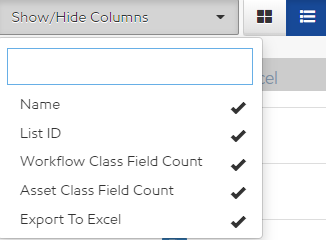
Parent/Child Lists
Overview of a Parent and Child Lists
Parent and Child lists are a combination of two lists that are connected. For example, consider a parent list of car manufacturers, and a child list of car models. For each manufacturer selected from one list, only the models of that manufacturer are available to select in the other. To accomplish this, a parent and child relationship must be created.
Quick Steps to Creating Parent and Child Lists
- Create a list containing the parent values.
- Create a list containing the child values.
- Assign the parent list to the child list
- For each item in the child list, assign a value from the Parent list.
- Create a Multiple Choice field for both Parent and Child lists in the Asset attributes or Workflow fields
Detailed Steps to creating Parent and Child Lists
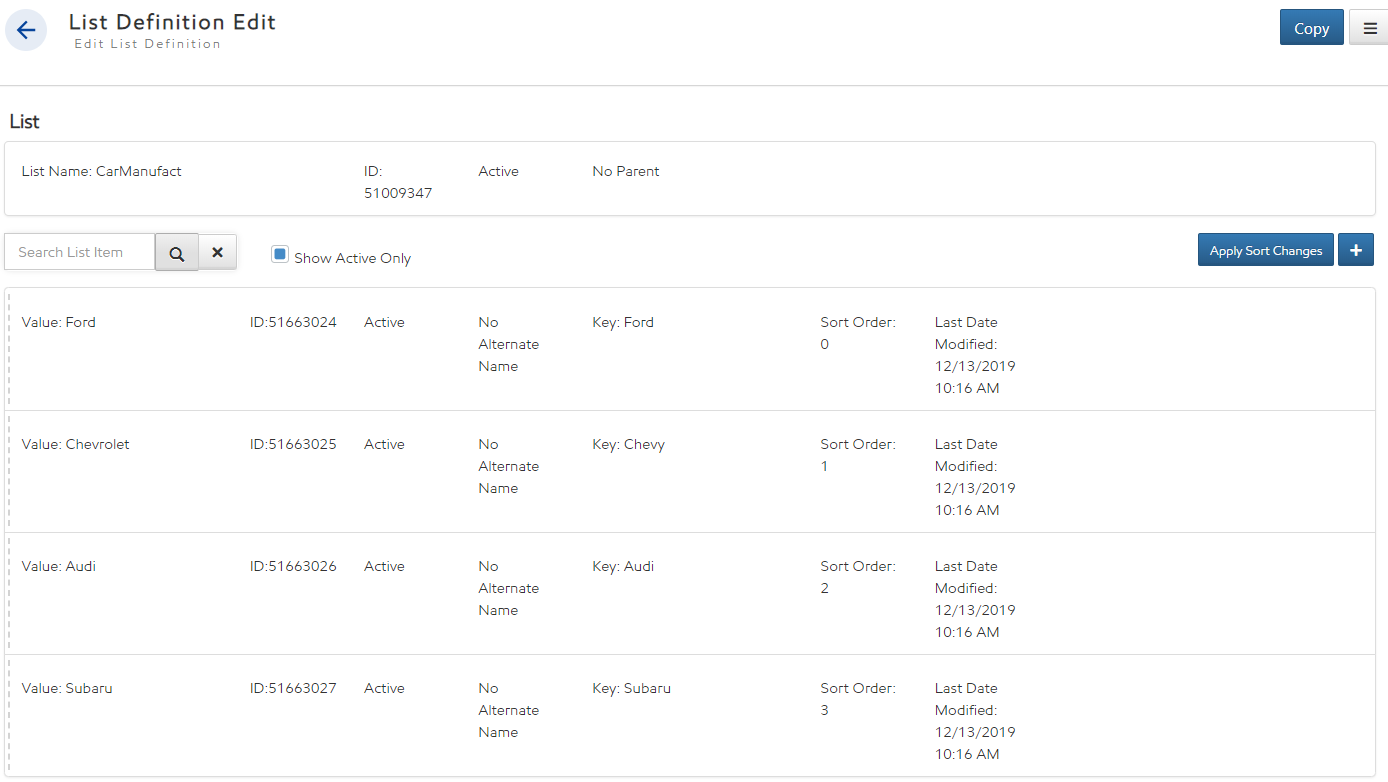
- Create a list containing the parent values (For example car manufacturers).
- Create a list containing the child values. Include values for each of the options in the parent list.
- In the Child list, assign the Parent list.
- For each of the items in the child list, assign a value from the Parent list. This identifies the condition when each item is displayed in the child drop down list.
- In the field definition of Asset Class Attributes or Workflow Fields, create a Multiple Choice field for both parent and child lists.
- When a value is selected in the parent field, the available options in the child list are filtered.
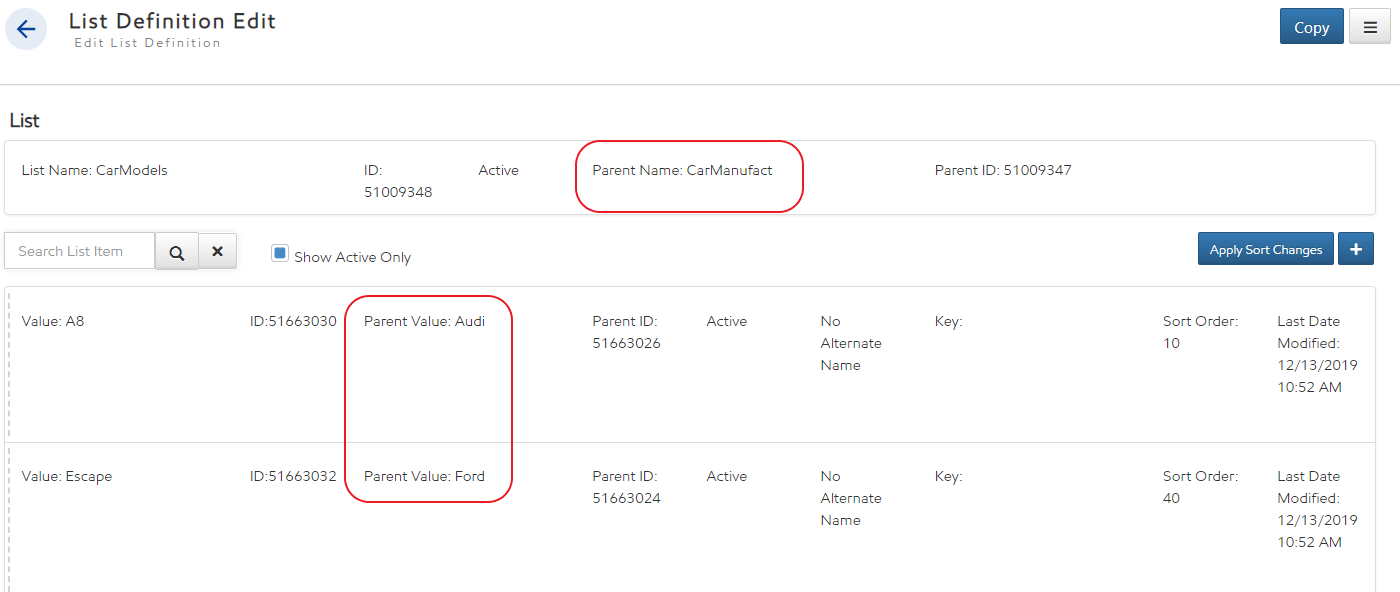
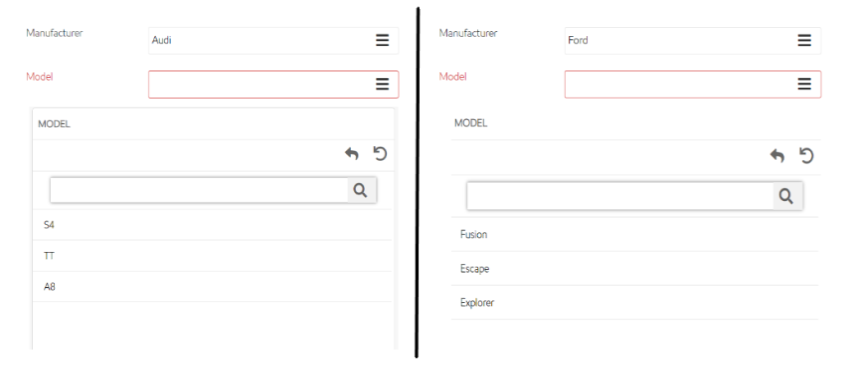
Export a List Definition
Quick Steps to Export a List Definition
- From the List Definition page, select Export for the list to be exported (Export in card view, Excel icon in list view).
- An Excel file is created with the fields of the list.
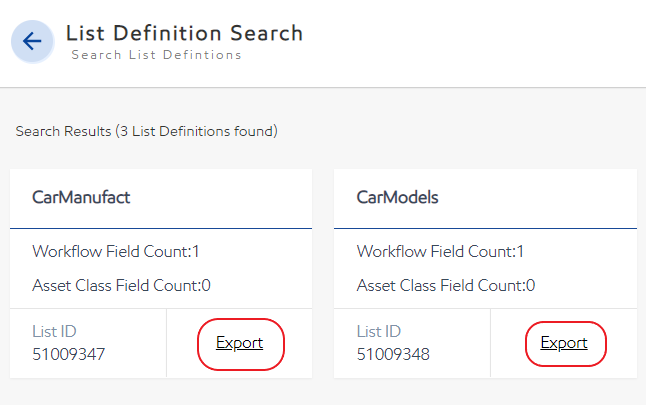

OR
- Open the list and select Export.
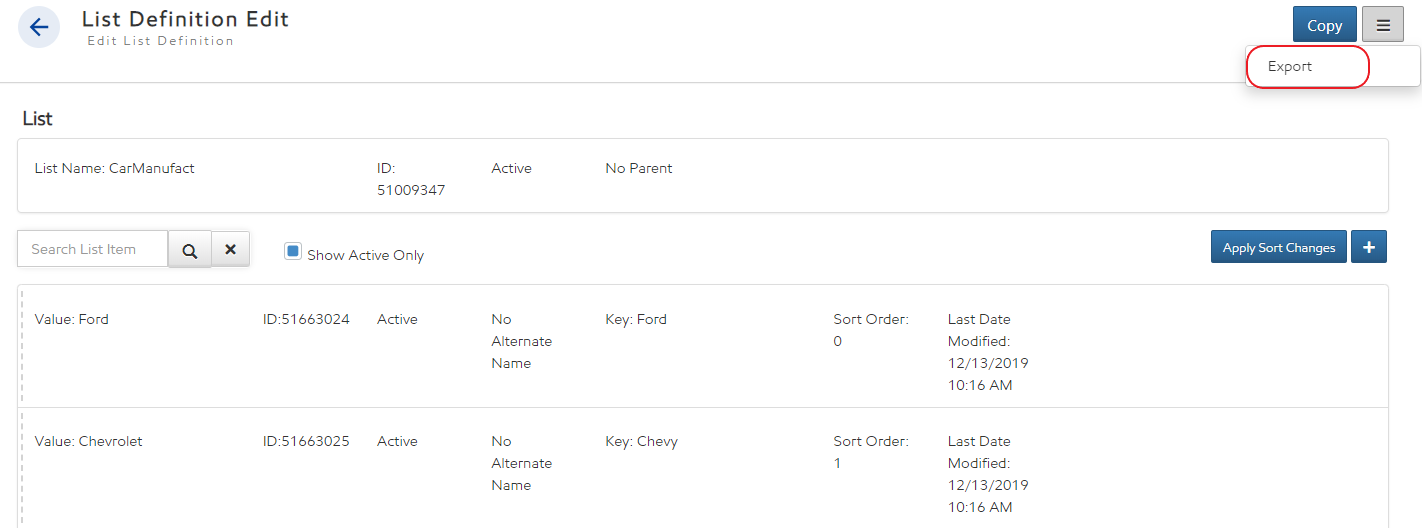
You can import the edited list. See the directions in the Quick steps to Import a List Definition section below.
Import List Definition
You can import an edited (exported) list, or create a new list.
Quick Steps to Create a new List Definition
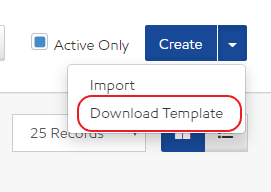

- Select Download Template
- An Excel file is created with the fields needed to create the list.
- Populate the spreadsheet with the list information and save the file on your local machine.
List Name fields:
- List ID: The ID of this list. Only for use when updating an existing list, NOT creating a new list. For new lists, this value is auto-populated during import.
- List Name: The name of this list
- Is Active: True = Active; False = inactive
- Parent List ID: The ID of the parent list (only required if creating a parent/child relationship)
- Parent List Name (read-only): The name of the parent (only required if creating a parent/child relationship)
Child List Item Fields:
- List Item ID : The ID of this item. Leave blank when importing a new list definition to create a new list item
- List Item Value: The value to be displayed
- Is Active: Identify if this list item is active or inactive
- Allow Alternate Name: Select to allow the end user to enter a text value
- Parent List Item ID: The ID of the parent option that controls when this value is displayed
- Parent List Item Value (read only): The value of the parent list item that controls when the child option is displayed.
- List Item Key: if the user has this option selected in their account
- Sort Order: The order that the items are displayed by in the list.
- Date Last Modified: Date the field value changed. (Set on existing fields.)
Quick Steps to Import a List Definition
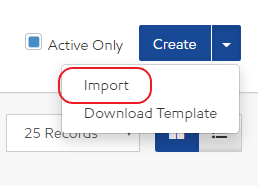
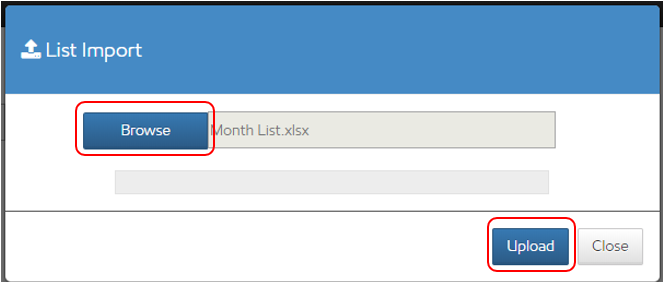
- Once you have a completed spreadsheet, from the List Definition Search page, select Import.
- Enter your file name by typing or browsing to the location, and select Upload.
- The list is added.
- Select the list row to open the list and view or the imported contents of the list.
